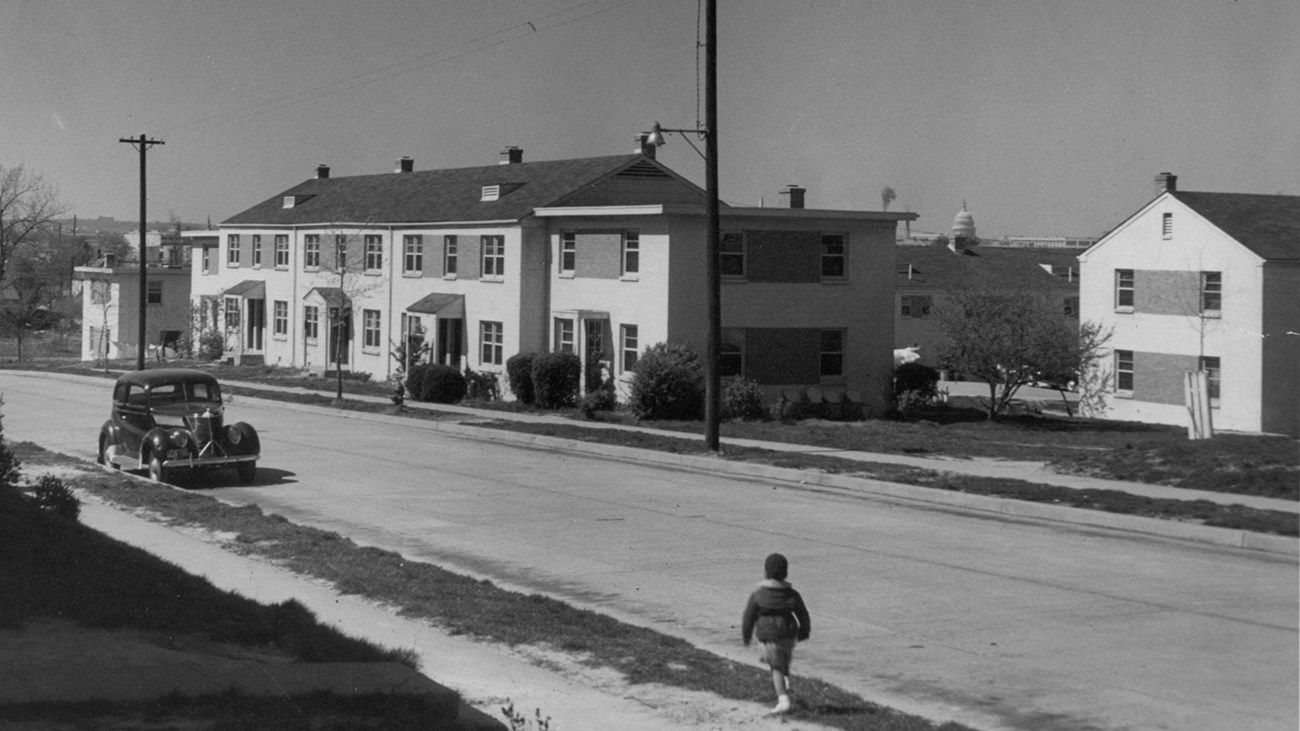Last updated: January 9, 2025
Article
Barry Farm Dwellings (Washington, DC)

National Capital Housing Authority (D.C. Housing Authority).
African American Civil Rights Network Member
Barry Farm Dwellings, was a 442-unit public housing project built in 1943 by the National Capital Housing Authority. Located east of the Anacostia River on the eastern side of Washington, D.C., the community was intended primarily for African American residents. Barry Farm had two- to four-bedroom town houses, some of which were eventually combined to create six-bedroom units, and a recreation center. initial priority for housing was given to people displaced by war-related projects, working in war-related jobs, or employed by the U.S. military. At the time, Berry Farm Dwellings was Washington, D.C.'s largest subsidized housing complex for African Americans.
The Barry Farm Community became a hub for civil rights activism in the 1950s-60s. In 1950, residents asked that their teenaged children be allowed to attend a newly built Whites-only school, John Phillip Sousa Junior High, in southeast D.C., and that the school be integrated. At the time there was only one junior high school for African Americans students east of the river - Kelly Miller Junior High School, built in 1949 over 20 minutes north of Barry Farm. African American students were denied admittance to the new junior high school and organizing by Barry Farm residents led to the filing of a complaint, Bolling v. Sharpe, one of several companion cases to Brown v. Board of Education. In 1954 the U.S. Supreme Court ruled that segregated public education was unconstitutional and as a result, schools in the United states were desegregated. Because it concerned schools within a federal district, the U.S. Supreme Court rendered a separate opinion on Bolling v. Sharpe, finding for the plaintiffs. Schools in the District of Columbia were also desegregated.
In 1965, Barry Farm residents Etta Horn and Lillian Wright organized a tenants’ council with the support of President Johnson’s War on Poverty program. In its first victory at Barry Farm, the group secured a $1.5 million renovation of the property. The group formed the nucleus of the Citywide Welfare Alliance (CWA), and Horn helped found the National Welfare Rights Organization (NWRO), which fought to advance the rights of welfare recipients nationwide. Organizing meetings were held at Horn’s house. Etta Horn also provided guidance to Martin Luther King, Jr. as he planned the Poor People’s Campaign in 1968.
Created by the African American Civil Rights Act of 2017, and coordinated by the National Park Service, the African American Civil Rights Network (AACRN) is a collection of properties, facilities, and programs that offer a comprehensive overview of the people, places, and events associated with the African American civil rights movement. The Network is an opportunity to ensure that the history of African American civil rights in the United States and the sacrifices made by the people who fought for those rights are remembered, shared, and commemorated.
